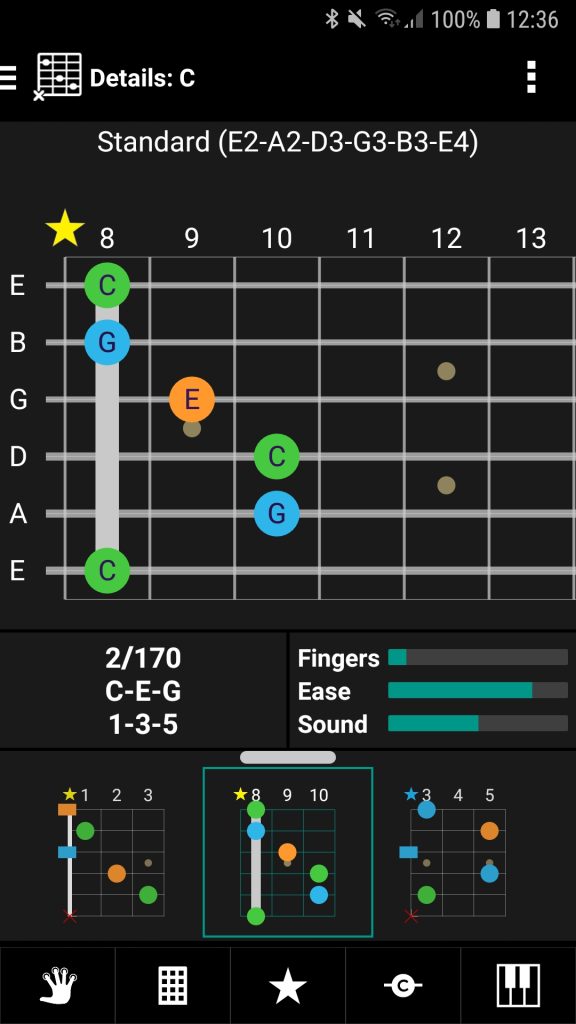Chord inversions
Chord inversions are a fundamental concept in music theory that involves rearranging the notes of a chord. A chord is a group of three or more notes played together, and the order or arrangement of these notes within the chord is what determines its inversion. Chord inversions provide a way to vary the sound and voicing of a chord, adding richness and variety to your music. Understanding chord inversions can enhance your ability to create interesting and smooth-sounding chord progressions, whether you’re composing music, playing an instrument, or analyzing existing pieces.
Here are some key points to know about chord inversions:
- Definition: A chord inversion occurs when the root note of the chord is not the lowest sounding note. In other words, the notes of the chord are reordered so that a different note serves as the bass note.
- Root Position: The standard form of a chord, where the root is the lowest note, is called root position. For example, in a C major chord (C-E-G), the root position has C as the lowest note.
- First Inversion: In a first inversion, the lowest note is the third of the chord. Using the C major chord as an example, the first inversion would be E-C-G, with E as the lowest note.
- Second Inversion: In a second inversion, the lowest note is the fifth of the chord. Continuing with the C major chord, the second inversion would be G-C-E, with G as the lowest note.
- Chord Symbols: Chord inversions are often indicated in chord symbols. The bass note is specified after a slash (“/”). For example, a C major chord in first inversion would be notated as C/E.
- Voice Leading: Chord inversions can create smooth voice leading when transitioning between chords. In some cases, it allows for a more connected and fluid progression, especially in polyphonic instruments like guitar or piano.
- Common Usage: Chord inversions are commonly used in various musical genres to create harmonic interest and to make chord progressions more interesting. They are especially prevalent in keyboard and guitar playing.
- Practical Application: Practice playing chords in different inversions on your instrument. This will not only improve your finger dexterity but also deepen your understanding of harmony and chord progressions.
Chord inversions with smartChord
Evaluate the notes of the chord
Start with the Chords screen to explore the inversions of a chord. If the chord gallery is big enough, you can see the note names of the chord. You can always see the note names on the Chords details screen.


Check the chord settings
The chord settings are critical in determining the voicings of a chord.
- Option Mandatory root
For instruments like the Guitar, the option Mandatory root is active by default. The lowest note of the chord follows the name of the chord. For instruments like the Ukulele the option Mandatory root is inactive by default. If you want to evaluate the inversions, please activate the option Mandatory root. - Option Allow rootless chords
The option Allow rootless chords is inactive by default. This means, that a chord always has its root note. But when the option is enabled, chords are regarded as complete, even if the root note is dropped. It will make it easier to play a chord, as you have to play one note less. Some chords are just possible as rootless chords on instruments with few strings like a Cigar Box Guitar or a Ukulele. You can easily use rootless chords if you’re playing in a band, as often the bass player will play the root note. Or use it, if you like the ‘jazzy’ sound of rootless chords (see more: https://www.thejazzpianosite.com/jazz-piano-lessons/jazz-chord-voicings/rootless-voicings). If you want to evaluate the inversions, please deactivate the option Allow rootless chords.


Get the chord inversions
Select an inversion by changing the bass note of the chord. You can change the bass note and create a slash chord by clicking on the bass note button behind the slash. If you select the root note as the bass note, it’s a ‘norma’l chord again.
Example for chord C
In the first inversion for major chord C, the lowest note is the third of the chord. That’s an E. The first inversion would be E-C-G, with E as the lowest note.


In the second inversion for major chord C, the lowest note is the fifth of the chord. That’s an G. The second inversion would be G-C-E, with G as the lowest note.

